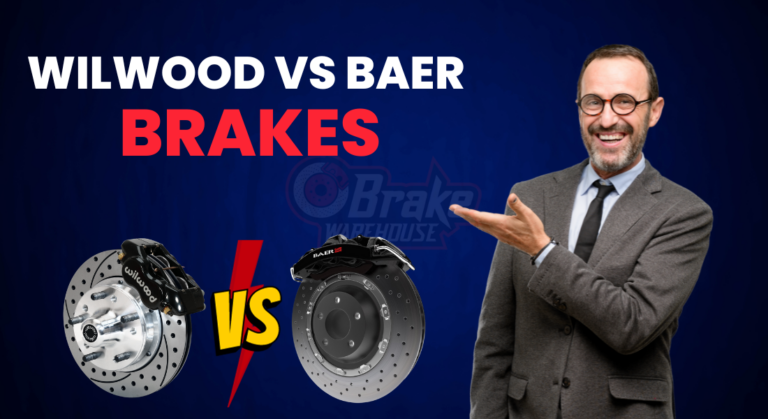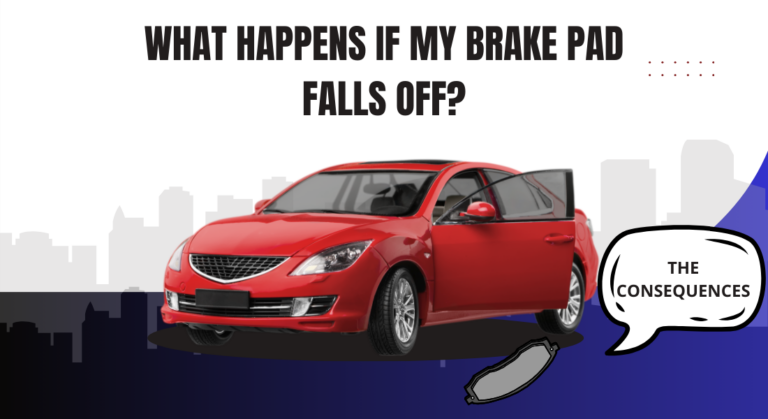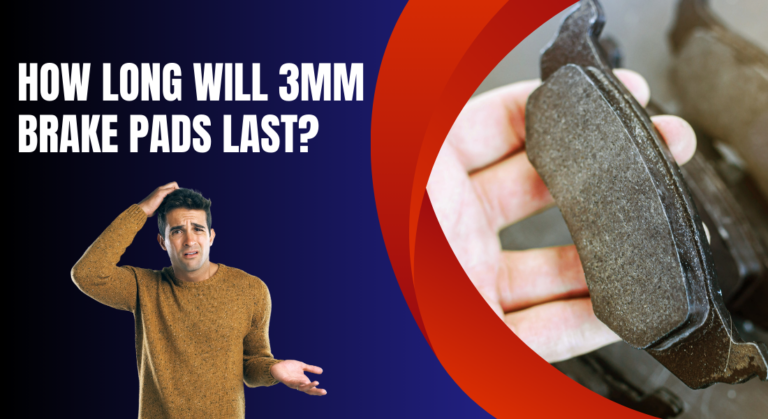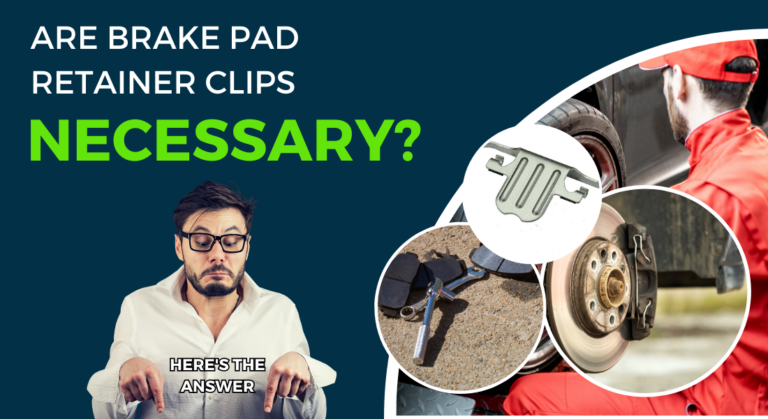How to Fix Hard Brake Pedals After Bleeding?
Brake line bleeding removes air bubbles. Thus, your car braking system works efficiently. However, improper technique may leave air, causing a firm pedal. So, how to fix the hard brake pedal after bleeding.
In my experience, an improperly executed bleeding procedure. Often due to inexperience or impatience, is the primary culprit behind this issue. Moreover, the other reasons are the damaged brake booster, blocked brake line, and misaligned brake push rod.
Learning the root cause will help you solve the issue easily. Read this comprehensive guide to know the possible reasons and solutions for hearing the brake pedal after bleeding.

Why is my brake pedal firm post-bleeding?
Wondering about a tough-to-depress brake pedal?
You may have noticed difficulty pressing it down or even stiffness or locking. Find out the culprits for a hard brake pedal post-bleeding include:
Improper Brake Line Bleeding
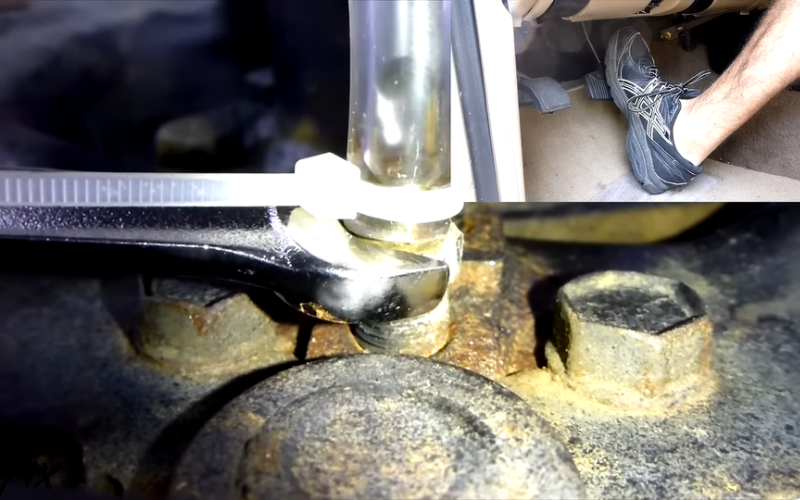
Improper brake system bleeding can cause a hard brake pedal after the bleeding process. When air is not entirely removed during bleeding, it becomes trapped in the brake lines.
Unlike brake fluid, air compresses easily, leading to a loss of hydraulic pressure when you press the brake pedal. This results in a firm or unresponsive pedal, reducing braking effectiveness and safety.
To rectify this issue, it’s essential to re-bleed the brakes correctly, ensuring all air bubbles are expelled from the system. Proper bleeding restores hydraulic pressure, allowing the brake pedal to function as intended, ensuring safe and efficient braking.
Damaged Brake Booster
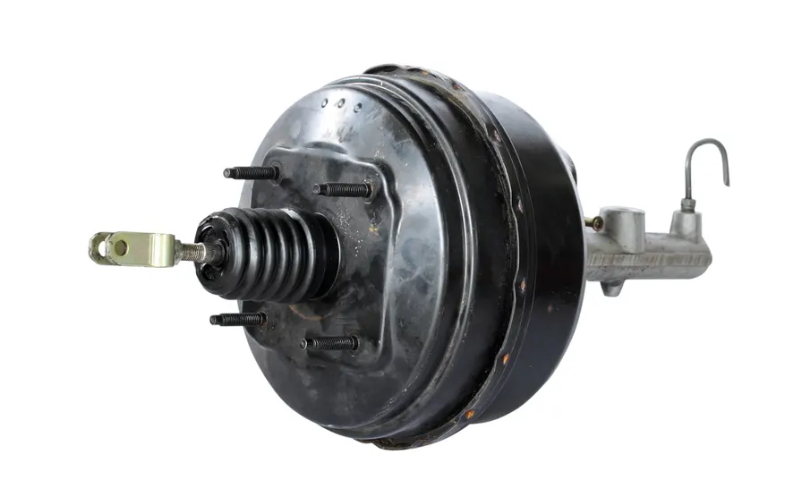
When your brake booster is damaged or has worn out, it can lead to a stiff brake pedal. The brake booster uses vacuum pressure to assist braking; without it, the driver will need to exert more force. Look for symptoms like hissing sounds, leaks, a higher pedal position, and more.
Read Also: Not Enough Vacuum for Brake Booster – How To Fix It?
Misaligned Brake Push Rod
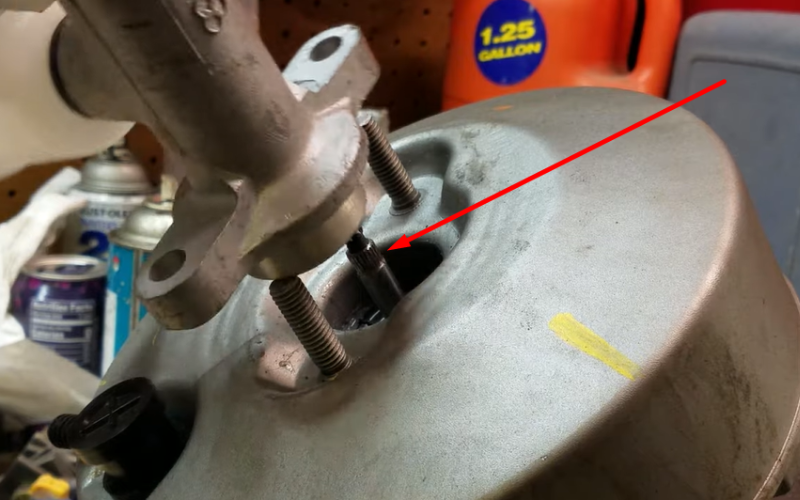
During bleeding, I’ve encountered instances where the push rod was overly tightened. It leaves insufficient space between the master cylinder and the brake booster.
This commonly happens due to inexperience, highlighting the importance of correct component adjustment and calibration.
Blocked Brake Line
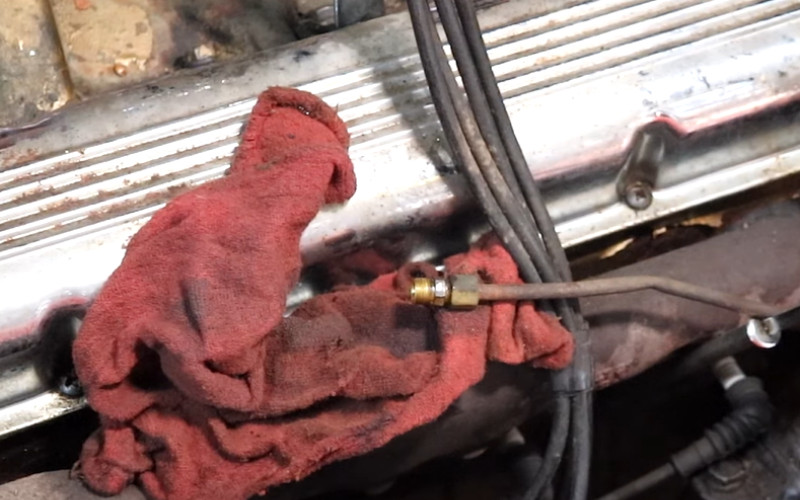
Another possibility is a particle lodged in your brake line, hindering fluid flow and causing a hard brake pedal.
How to Fix Hard Brake Pedal after Bleeding?
When addressing a hard brake pedal issue, the appropriate solutions depend on the identified root cause.
For instance, if upon inspection you determine that your vehicle’s brake booster is defective or any brake system components require replacement, follow these steps to rectify the firm pedal after bleeding:
Ensure Correct Bleeding
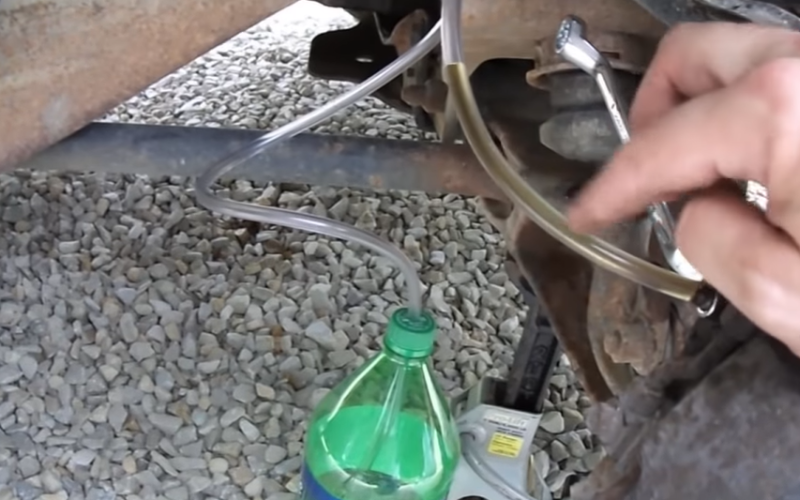
Proper bleeding involves expelling air from the brake system by forcing brake fluid from the master cylinder to the caliper of the disc brake until all air bubbles are eliminated.
To do this, loosen the bleed screw at the highest point, allowing fluid to escape until no air bubbles remain. Then, tighten the screw and refill the fluid. Repeat this process for each wheel.
Read Also: Why Does Brake Pedal Goes to Floor after Bleeding?(4 Causes)
Inspect the Brake Booster
A hard brake pedal, lack of brake response, or brake lock-up can be attributed to a malfunctioning brake booster. Listen for vacuum leaks or hissing sounds often accompanying a failing booster.
Additionally, check the Brake Booster check valve for damage, as it prevents air from entering the brake system. Inspect your brake booster as follows:
- Ensure the engine is off.
- Fully depress the brake pedal until it becomes firm.
- Start the engine; the brake pedal should slightly sink (typically by an inch). If it does, the booster functions correctly, and you have brake assistance. If not, consider a replacement.
Inspect the Master Cylinder
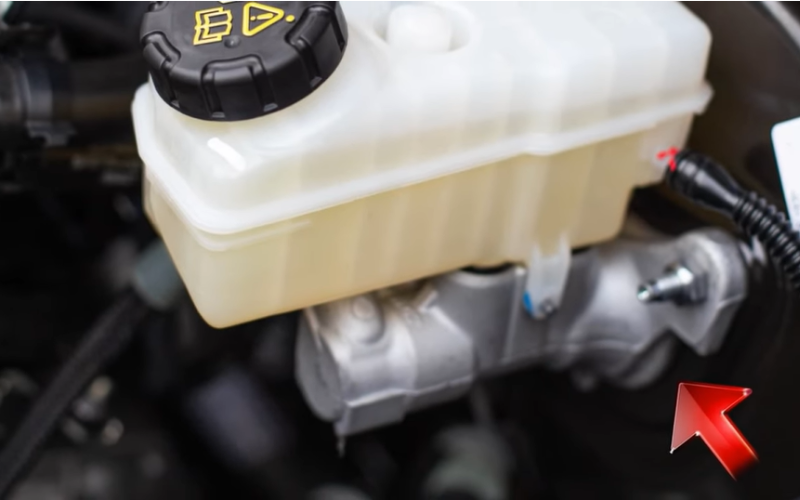
The master cylinder generates hydraulic pressure to activate the brakes. A damaged master cylinder can lead to pressure loss or uneven brake force distribution, resulting in a hard-to-press brake pedal.
Pay close attention to the master cylinder during your troubleshooting efforts. Consider testing the master cylinder as outlined in a relevant guide.
Read Also: Brake Pedal Goes to Floor After New Master Cylinder – Why?
Consult a Professional
If you’ve successfully bled the brakes and inspected components without identifying any issues, seek assistance from a professional.
There’s no shame in asking for help, even for experienced mechanics. A professional mechanic possesses the expertise to diagnose complex automotive problems accurately.
Remember, safety is paramount when working on your vehicle’s braking system. If you need more clarification about any repair aspect, it’s wise to consult a qualified mechanic.
What should I keep in mind to prevent these issues following brake bleeding?
Several crucial considerations can help you avoid complications after bleeding your brake system:
Use the Appropriate Brake Fluid
Many inexperienced individuals must use the right brake fluid, leading to numerous problems. I recommend using only the manufacturer-recommended brake fluid for your specific car model.
Follow the Correct Bleeding Procedure
Consult your vehicle’s manual to ensure you follow the procedure for bleeding the brake fluid from the system.
Maintain Fluid Levels
After bleeding, it’s essential to refill the brake fluid to the appropriate level. Low fluid levels can damage the entire braking system and result in brake failure.
Inspect for Leaks
Regularly check for leaks in the brake line, manifold, hoses, and other components. Any leaks can lead to a significant loss of brake fluid, affecting braking power and safety.
Test the Brake Pedal
Always assess the responsiveness and functionality of the brake pedal to ensure it operates correctly. This step helps ensure your brakes are in good working order.
FAQs
Can air in brakes cause a hard pedal?
Yes, air in the brake system can indeed cause a hard pedal. Air entering the brake lines compresses differently than brake fluid, leading to decreased hydraulic pressure. This can result in a firm or unresponsive brake pedal, compromising braking efficiency and safety. Bleeding the brakes is necessary to remove air and restore proper pedal feel.
Is it safe to drive with a stiff brake pedal after bleeding?
Driving with a stiff brake pedal after bleeding is not safe. A hard pedal indicates reduced braking efficiency, increased stopping distances, and compromised control. Addressing this issue promptly is crucial, as it can lead to unsafe driving conditions and potential accidents. Seek immediate inspection and repair to ensure road safety.
Can improper bleeding lead to a hard brake pedal?
Yes, improper bleeding can result in a hard brake pedal. During bleeding, air trapped in the brake system causes reduced hydraulic pressure, leading to a firm pedal. Following correct bleeding procedures is essential to remove air. Restore proper brake function for safety and optimal braking performance.
Final Words
Ensuring the upkeep of your brake system is an essential skill for all car owners. A well-maintained brake system provides safety and confidence while driving. For this, it is essential to learn how to fix hard brake pedal after bleeding.
If you encounter firm brakes, we advise following the guidance and recommendations in this article. In case the issues persist, don’t panic; instead, consider seeking assistance from a qualified mechanic.

Meet Zayan, the mechanical genius behind the highly acclaimed brakes problems and solutions website. With over a decade of hands-on experience in the automotive industry, Zayan has become a trusted authority in the realm of brake systems.
His passion for cars, coupled with his expertise in solving complex brake-related issues, has earned him a devoted following of car enthusiasts, mechanics, and everyday drivers seeking reliable guidance.

